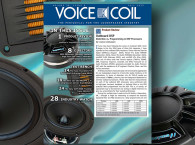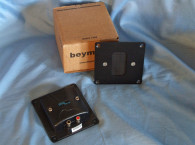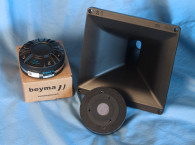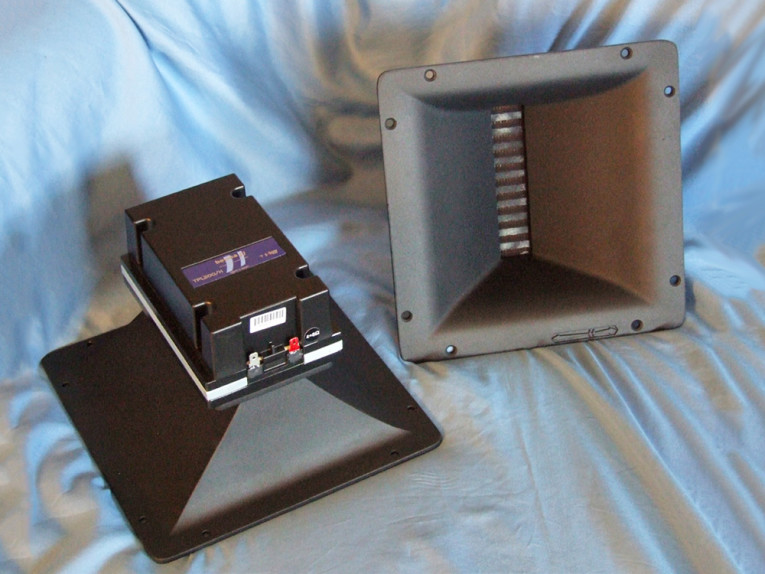
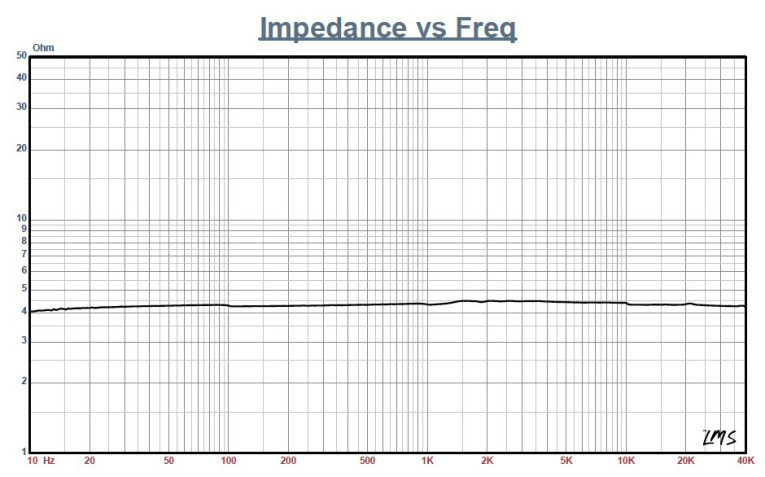
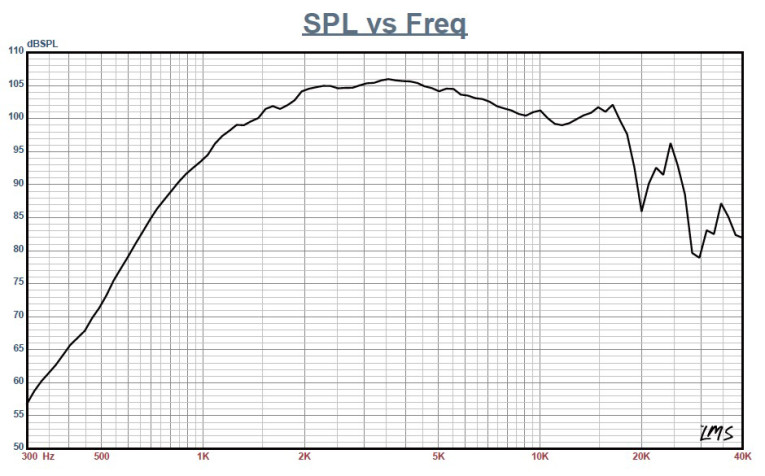



The subject of this explication, the TPL200/H, is one of the Air Motion Transformers (AMT, aka AVT Air Velocity Transformer) that Beyma has developed for pro sound applications. There has been a “renaissance” in AMTs over the last several years, and we now find them showing up not only in home audio, but also in pro sound studio monitors and PA applications.
Beyma has been on the forefront of this movement and produces a number of high power hanging, high-efficiency AMTs for pro sound applications. Part of the success of Beyma’s AMTs for pro sound comes from its proprietary X-Bow technology. The target of X-Bow Technology is to open as much as possible the mechanical constraint in the diaphragm, allowing it to manage higher temperatures thus increasing the limit of the power it can handle.
In terms of features, the Beyma TPL200/H is a horn-loaded version of the highest power handling AMT in the Beyma AMT line and is rated at 120 W AES (24 W program). With sensitivity of 104 dB 1 W/1 m (3 dB more than the flat faceplate version, the TPL200B/S), the TPL200/H has a diaphragm area of about 120 mm × 28 mm and is made of Kapton. Other features include a neodymium magnet motor, a cast aluminum 80° × 30° horn, a 1 kHz recommended minimum crossover frequency (second-order or higher high-pass filter), 8 Ω nominal impedance, and standard solderable terminals (see Photo1).
I began testing using the LinearX LMS analyzer to produce the 300-point stepped sine wave impedance plot shown in Figure 1. As with most AMTs, the TPL200/H really has no definable resonance and is nearly a constant load across the bandwidth. With a 4.42 Ω DCR (Re), the TPL200/H’s minimum impedance above 1 kHz was about the same as the DCR, 4.4 Ω.
For the next set of SPL measurements, I free-air mounted the TPL200H without an enclosure and measured both the horizontal and the vertical on and off-axis at 2.83 V/1 m, again using the LMS gated sine wave sweeps to produce both horizontal and vertical plane SPL data from 0° on-axis to 60° off-axis. Figure 2 illustrates the on-axis frequency response of the horn-loaded AMT, which is smooth with no major anomalies with a declining response as frequency increases above 3.5 kHz, and extending to 20 kHz, and requiring about the same equalization as a constant directivity horn.
Figure 3 depicts the on- and off-axis response in the horizontal plane. Figure 4 displays the normalized horizontal plane response. Figure 5 shows the CLIO Pocket analyzer’s generated 180° horizontal polar plot (in 10° increments with 1/3 octave smoothing applied). Figure 6 gives the on and off-axis to 60° response in the vertical plane. Figure 7 depicts the normalized vertical plane response. Figure8 shows the CLIO Pocket-generated vertical plane polar plot (in 10° increments with 1/3 octave smoothing applied). Last, Figure 9 illustrates the two-sample SPL comparison showing the two TPL200/H horn-loaded AMT driver samples to be very closely matched within less than 0.5 dB throughout the operating range of the transducer.



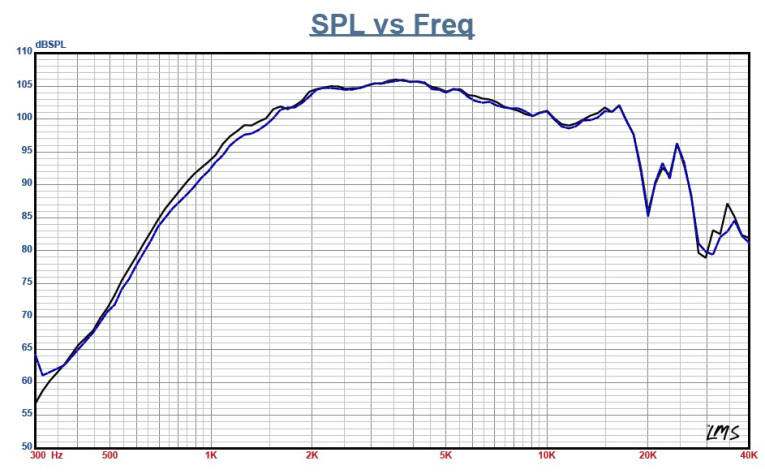
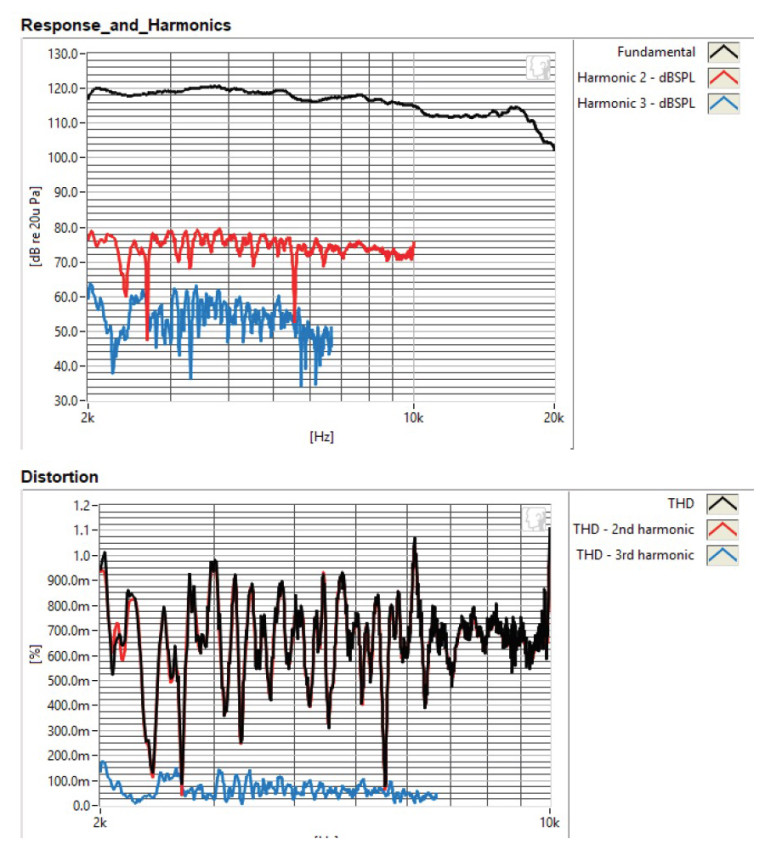
For the remaining series of tests, I again set up the Listen AudioConnect analyzer, SoundCheck 16 software, and the Listen 1/4” SCM microphone to measure distortion and generate time-frequency plots. For the distortion measurement, I again mounted the TPL200H in free-air, in the same manner as was used for the frequency response measurements, and set the SPL to 104 dB at 1 m (3.58 V determined by using a pink noise stimulus generator and internal SLM in the SoundCheck 16 software). Then, I measured the distortion with the Listen 1/4” measurement microphone located 10 cm from the mouth of the horn. This produced the distortion curves shown in Figure 10 (red curve = second harmonic, blue curve = third harmonic).
Following this test sequence, I then set up SoundCheck 16 to generate a 2.83 V/1 m impulse response for this driver/horn combination and imported the data into Listen’s SoundMap Time/Frequency software. Figure 11 shows the resulting CSD waterfall plot. Figure 12 shows the STFT plot.
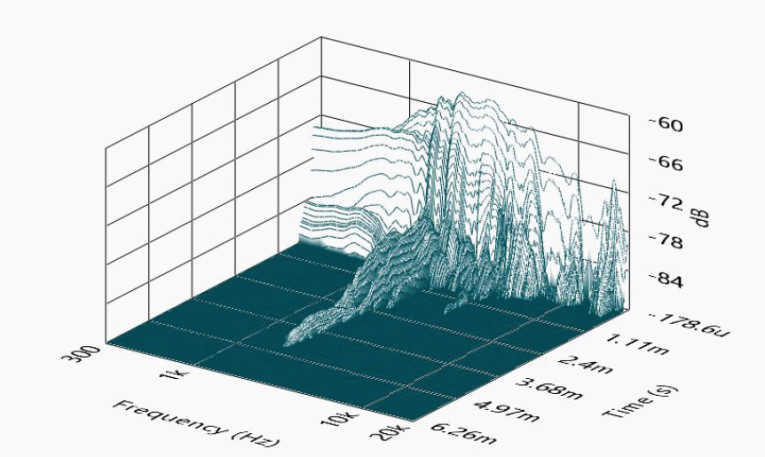
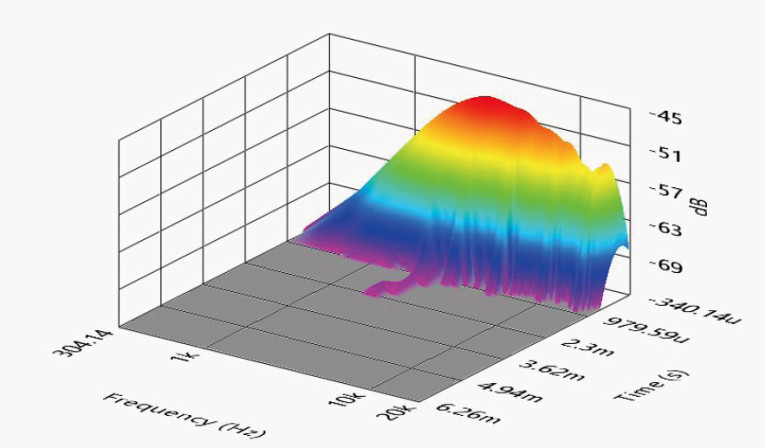
Looking at all the collected objective data on the Beyma TPL200/H, the performance is on par with most high-quality compression drivers, with the power handling required of high SPL applications, plus the unique sound of Oskar Heil’s original invention, which is impressive. For more information, contact Acustica Beyma, S.L., Carrer del Pont Section 1c, 46113 Moncada, Valencia, Spain, email beyma@beyma.com, or visit www.beyma.com. VC
This article was originally published in Voice Coil, July 2018.




